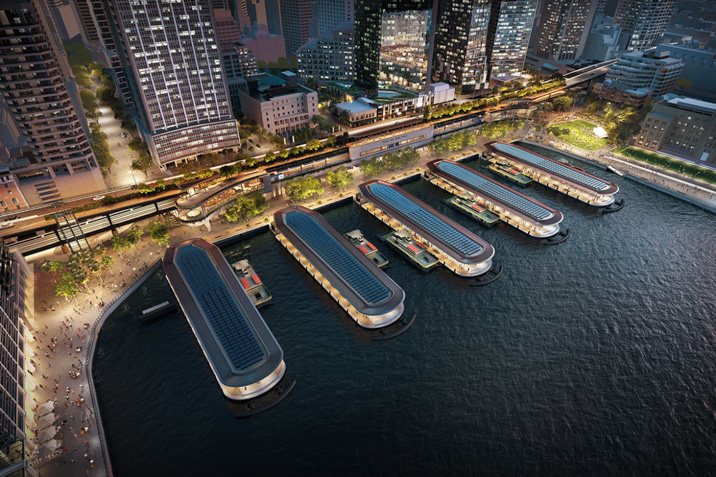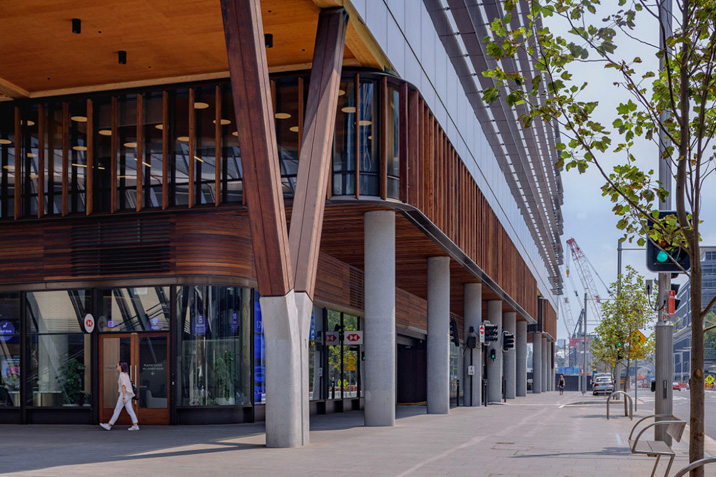Sydney architecture studio Tzannes is launching its new website. What began as an exercise in arranging a portfolio of award-winning work has evolved into a profound process of self-reflection as the practice readies itself for a multigenerational future.
It’s less than a rebrand but more than a website launch; there is nothing especially new but nor is there simply a repeat of the past. Just as a well-rounded individual might undergo a process of self-reflection after four decades of life, Tzannes has been returning to the fundamentals.
“We’ve looked at what has been distinctive in our work and what our contribution to architecture has been. What’s new is that we’re really understanding what our DNA is and using that to design our future,” says Founding Director Alec Tzannes.

Just like the impressive portfolio of projects, including Daramu House and the recently announced Circular Quay Renewal (with Weston Williamson + Partners and working in collaboration with ASPECT Studios), the approach at this juncture in the life of the studio is nuanced. It might best be described as a process of self-reflection and (re)discovery: “All of us – not only directors but across the whole studio – have been talking about our values, asking what’s really important and consolidating our thinking. The more we talked about it, the clearer it became,” explains Director Amy Dowse.
The core values, expounded at some length on the new website, include placemaking, designing with Country, collaboration, committing to a post-carbon future and architecture designed to endure.
“The past 40 years have led us to almost redefine our values, to clarify their foundations,” says Senior Associate Yi-han Cao. Just as the architectural design process zooms in and out at different scales and jumps back and forth in various iterations, so too does this self-reflection draw on both the past and future.
Reflecting on past work, for example, has led to a richer engagement with Indigenous principles of caring for Country. It has been there from the start, as Alec says: “Our take is that Indigenous cultures have had better values, such as caring for all living things.”
Cao explains further: “working with First Nations elders and consultants has made us realise that many of our values align with that way of thinking.”
“I think there are more similarities than we first thought so, for us, it’s easy to integrate an approach of caring for Country because those values are already front and centre of our work,” adds Dowse.

The language of reconciliation or sustainability can be thrown around in any industry but what distinguishes Tzannes’ approach – no doubt in part due to this process of self-reflection – is the willingness to think through such issues with a level of intellectual rigour and ethical commitment. For example, Alec is clear in stating that designing with Country in the contemporary world means finding ways to marry Indigenous ways of thinking and value systems with scientific knowledge.
This way of thinking informs an ethical approach across all aspects of practice, including an emphasis on fairness in the workplace. “I think there is alignment in terms of the way we treat a number of things – each other, our projects, Country and all living beings,” says Dowse.
“I would say we are anti-commodification,” states Alec, with no small amount of conviction. “And we don’t do green-washing.” Tzannes is a studio unafraid to tackle important issues for the future by drawing on wisdom gained in past work. As it evolves through this critical juncture by reflecting on its foundational values, we might just be witnessing the birth of a multigenerational practice.
For more information, visit tzannes.com.au.
Images
Top: Amy Dowse and Alec Tzannes
Middle: Circular Quay Renewal, Tzannes and Weston Williamson + Partners working in collaboration with ASPECT Studios
Bottom: Daramu House, Barangaroo (Photography by The Guthrie Project)
This article was written by Indesignlive Assistant Editor, Timothy Alouani-Roby and reposed on Architecture & Design. Read the original article here.

